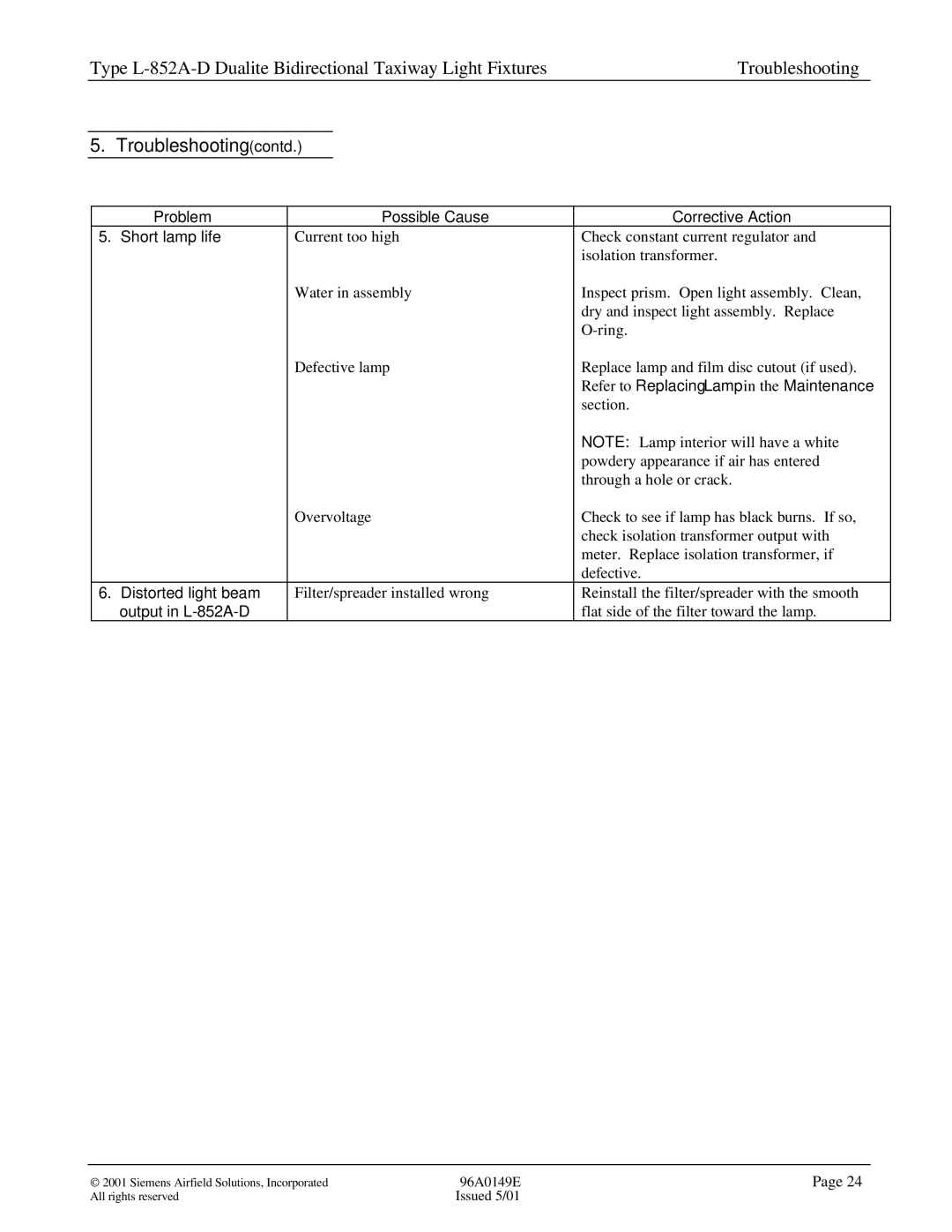L-852A-D specifications
The Siemens L-852A-D is an advanced lighting system designed primarily for airport applications, providing a robust solution for runway edge lighting. This innovative product is engineered to enhance safety and operational efficiency in various weather conditions, catering to the unique demands of modern air traffic management.One of the most notable features of the L-852A-D is its LED technology. The use of light-emitting diodes significantly increases energy efficiency compared to traditional incandescent lights. LEDs are known for their long lifespan, often exceeding 50,000 hours, which translates to reduced maintenance costs and less frequent replacements. This is particularly beneficial in airport environments where minimizing downtime is crucial.
The L-852A-D is designed to provide exceptional visibility with its high-intensity output, crucial for both day and night operations. The system's optical design ensures uniform light distribution, which enhances pilot awareness and improves navigation during takeoff and landing. Additionally, the device is engineered to comply with international aviation standards, ensuring reliability and safety in all conditions.
Another key characteristic of the L-852A-D is its durability. The system is constructed to withstand harsh environmental conditions, including extreme temperatures, high winds, and moisture. Its housing is built from corrosion-resistant materials, ensuring longevity even in challenging climates. The product is also designed to be highly resilient to impacts, which is essential in high-traffic airport settings.
The L-852A-D incorporates sophisticated control technologies that enable adaptive lighting capabilities. This feature allows for automatic adjustments based on external conditions, such as visibility levels, significantly enhancing operational efficiency. Furthermore, it can be integrated with central control systems, allowing for seamless management and monitoring from a single point.
Safety is paramount in airport operations, and the L-852A-D includes features that enhance user and operational safety. Its low profile reduces the risk of physical hazards, while the integrated fail-safe mechanisms ensure continued operation in the event of a power failure.
In summary, the Siemens L-852A-D runway edge lighting system combines advanced LED technology, durability, and intelligent control features to provide an efficient and reliable solution for airport environments. Its main attributes include energy efficiency, long lifespan, compliance with regulatory standards, and robust construction, making it an ideal choice for enhancing safety and operational efficiency in aviation lighting.

